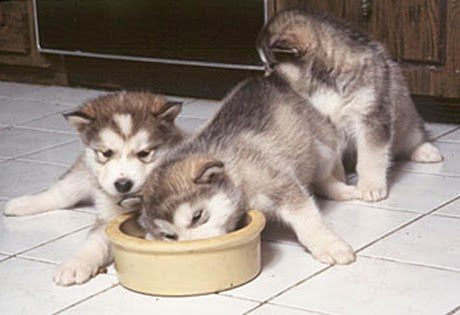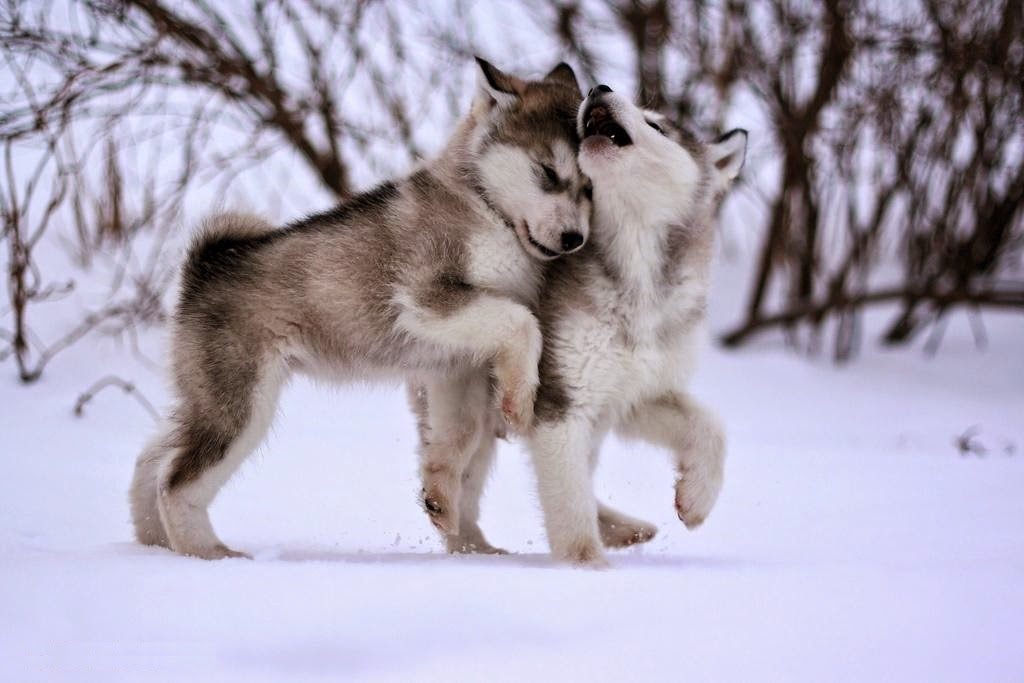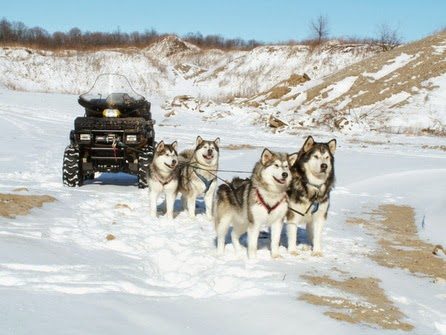Everything about your Alaskan Malamute
A close cousin to the Samoyed, Siberian Husky and American Eskimo Dog, the Alaskan Malamute is a Nordic sled dog named after one of Alaska’s native tribes. Not a racing breed, the Alaskan Malamute is built to pull heavy sled loads over lengthy distances. Very respected, this dog not only has a high endurance level and athletic ability, but a high willingness to work as well. A smart breed, the Alaskan Malamute enjoys any form of activity and has a deep love for its owner.
The Alaskan Malamute features a powerful, sturdy body built for stamina and strength. It reigns as one of the oldest dog breeds whose original looks have not been significantly altered. This intelligent canine needs a job and consistent leadership to avoid becoming bored or challenging to handle.
Overview
The Alaskan Malamute is a big, powerful dog who was bred to pull sleds in harsh terrain and brutal climates. Consider that fact carefully if you’re at all unsure about your ability to walk a dog like that on a leash. And a leash is not optional equipment when it comes to a Malamute; not only does he roam, often for miles and days, but he’s usually ready to mix it up with other dogs and will hunt and kill wildlife and cats.
Malamutes also extremely difficult to keep behind a fence, as they are expert diggers and climbers. If you want them back, Malamutes need to be microchipped and have an ID tag on their collars at all times. And while working Malamutes often live happily in kennel situations – because they get lots of exercise and plenty of interesting work to do — relegating a Malamute to the backyard isn’t a great idea, unless you like holes the size of a swimming pool, and your neighbors like howling. Not to mention that he’ll probably not be there when you get home, since he considers fences to be interesting challenges rather than genuine obstacles.
If none of that deters you, then you might be ready to consider some of the pluses to the Alaskan Malamute. He’s handsome, with a primeval look that can make you feel the snowy winds of the tundra even when you’re standing on a suburban lawn. And he absolutely adores children, although as with all large, powerful dogs, careful supervision is required.
Malamutes can be affected by a few genetic diseases, and there are temperament problems in the breed, so be careful to get your dog from either an experienced breeder who does genetic screening and temperament tests on her dogs, or a reputable rescue group that evaluates them for temperament and suitability for your family and lifestyle.
Highlights
- Not recommended for the first time dog owner as their intelligence combined with stubbornness can make them a challenge for someone not savvy in dog behavior.
- Malamutes will challenge for alpha or top position in the household. Everyone who lives with the dog must be able to properly deal with this and clearly establish all family members as higher ranking than the Malamute.
- Alaskan Malamutes are notorious diggers. Any fencing should be buried so they cannot dig out of their yard.
- Alaskan Malamutes are a powerful, independent dog who, if not properly trained or exercised, can become destructive or bored.
- With early socialization and training, Malamutes can learn to get along with other dogs and indoor cats. They’ll view outdoor cats and other small animals as fair game.
- Their high prey drive can cause a Malamute to stalk and kill small animals, including birds, squirrels, cats and even smaller dogs. They need to be properly socialized and introduced to other companion animals.
- Alaskan Malamutes shed heavily twice a year. Their thick double coats are not suited for hot climates.
- Generally a quiet breed, Malamutes rarely bark. They do hold conversations with you, vocally expressing themselves with “woo woo” sounds or loud, extensive howls.
- To get a healthy dog, never buy a puppy from an irresponsible breeder, puppy mill, or pet store. Look for a reputable breeder who tests her breeding dogs to make sure they’re free of genetic diseases that they might pass onto the puppies, and that they have sound temperaments.
- The Alaskan Malamute is a freighting dog, built to pull heavy loads for long distances. He is highly athletic with a well muscled body, deep chest, strong legs and a plume of a tail that waves over his back.
- An Alaskan Malamute’s head is broad with prick ears and dark-brown eyes. He has distinctive markings: a cap over the head and a face that is either all white or marked with a bar or mask. The coat comes in several colors, including white , and gray, black, sable and red, all with white on the belly, legs, feet and face.
AKC group: Working group
UKC group: Northern Breed Group
Average lifespan: 13 – 15 years
Average size: 75 – 85 pounds
Coat appearance: Double coated with thick, coarse top coat and oily, wooly undercoat
Coloration: Wolf gray, black, black and white or sable with possible red markings
Hypoallergenic: No
Other identifiers: Athletically built with strong frame, erect ears, almond-shaped eyes that are dark in color, large fluffy tail
Possible alterations: May be all white in color or have blue eyes.
Comparable Breeds: Akita, Siberian Husky









